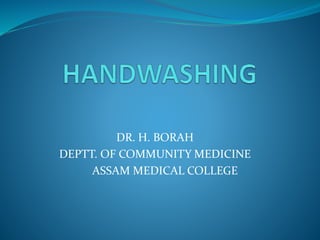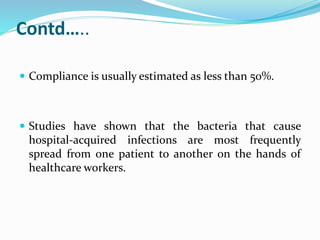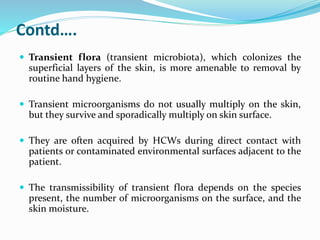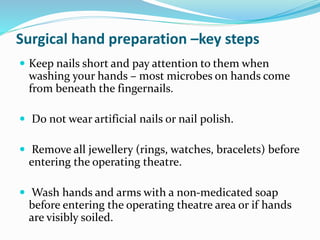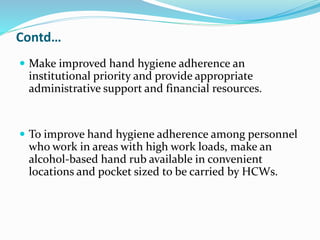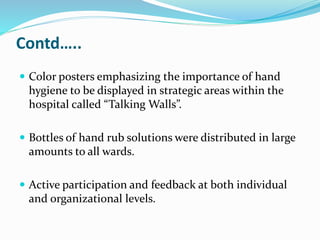This document discusses hand hygiene and proper hand washing techniques for healthcare workers. It begins by defining various types of hand hygiene and outlines the normal bacterial flora found on hands. It then explains how pathogens can be transmitted between patients via healthcare workers' hands if hand hygiene is not properly performed. The document provides guidelines for proper hand washing and surgical hand preparation. It stresses that hand hygiene is the most effective way to prevent hospital-acquired infections. Finally, it discusses various strategies that can be used to promote and monitor hand hygiene compliance among healthcare workers.
